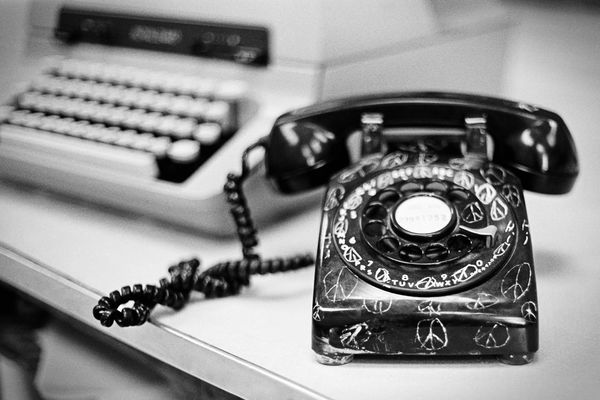Distinctive looks of cameras and lenses
Jul 20, 2021 07:31:38 #
It may also be a little dependent on your personal vision. I used to always shoot Nikon from my first Nikon FM to digital D200, through D500. To me the Nikon body with Nikon glass did not render red as red, but more like red-orange and this drove me crazy when I was taking Ballroom Dance photos of women in red dresses! But this was probably due to my eyes being off a bit on red. When I started shooting with Sony, I was very happy with the reds (and all other colors as well).
Jul 20, 2021 07:38:57 #
billnikon
Loc: Pennsylvania/Ohio/Florida/Maui/Oregon/Vermont
MrBob wrote:
When going through the archives late at night look... (show quote)
Love the color I used to get from older Minolta AF lenses. Also liked the color saturation I got from my Leica camera's. Yes, every camera manufacture has it's own unique look.
Don't forget the different look we old timers used to get with different color and slide films.
I believe some Fuji camera's can be programmed to give you different color looks, like Kodachrome, etc. I believe other camera manufactures have also picked up on this idea.
Jul 20, 2021 07:47:11 #
billnikon wrote:
Love the color I used to get from older Minolta AF lenses. Also liked the color saturation I got from my Leica camera's. Yes, every camera manufacture has it's own unique look.
Don't forget the different look we old timers used to get with different color and slide films.
I believe some Fuji camera's can be programmed to give you different color looks, like Kodachrome, etc. I believe other camera manufactures have also picked up on this idea.
Don't forget the different look we old timers used to get with different color and slide films.
I believe some Fuji camera's can be programmed to give you different color looks, like Kodachrome, etc. I believe other camera manufactures have also picked up on this idea.
Ah, it is a wonderment we captured anything sharp with ASA 25 and 64 film speeds and NO stabilization... Maybe we were a little more careful instead of just point and click.
Jul 20, 2021 07:58:58 #
GerryER
Loc: Virginia USA
In the "old days" film was what gave the major character differences; Fuji color was different than Kodak, etc. If you take some of the older Minolta lenses where the coatings have aged, you get a warmer tint to your photos. Some people buy the older lenses for that reason. Post processing in the darkroom didn't have the latitude that today's software has, so the differences were very apparent.
Jul 20, 2021 11:58:14 #
MrBob wrote:
Ah, it is a wonderment we captured anything sharp with ASA 25 and 64 film speeds and NO stabilization... Maybe we were a little more careful instead of just point and click.
Or maybe we were younger and our hands didn't shake as much.

Jul 20, 2021 13:39:48 #
As one who lived on the other end of your mountain (the TN end) I understand. I find that I can get different results from the same camera depending on conditions (light, fog, movement, etc.) that I try to correct or enhance in post processing.
Jul 20, 2021 13:53:23 #
P.S. It was back in the 40's but I remember visiting and even vacationing in Mentone.
Jul 20, 2021 13:59:52 #
RGreenway wrote:
It may also be a little dependent on your personal vision. I used to always shoot Nikon from my first Nikon FM to digital D200, through D500. To me the Nikon body with Nikon glass did not render red as red, but more like red-orange and this drove me crazy when I was taking Ballroom Dance photos of women in red dresses! But this was probably due to my eyes being off a bit on red. When I started shooting with Sony, I was very happy with the reds (and all other colors as well).
Firmly believe I would have very nearly identical red dresses from both brands, just as I have no color differences from the five brands I’m currently using.
Not worth asking how you process nor describing how I process, but I expect there are significant differences.
Jul 20, 2021 14:37:29 #
I shot film for 30 + years and when I went digital, I looked for a camera that had the same color characteristics of the film that I shot; but more important to me, and why I resisted digital for so long, was that I did not want prints that looked "digital". I bought the Nikon DF because because of its enhanced D4 chip and am pleased with the results I get. Since then, I picked up a Leica Q for the same effect. Chip technology and the software developed, does matter.
NRB
NRB
Jul 20, 2021 14:46:43 #
MrBob wrote:
When going through the archives late at night look... (show quote)
Paul's answer is accurate. Edit raw files from three different cameras and you can make the results very close to each other. The JPEG engines in cameras use brand-specific color science. But raw files are much less variable, save for Fujifilm's X-Trans sensors and the old Sigma Foveon.
At any rate, many of us here on UHH get distracted by technology and forget that photography is about telling stories with images. If you have no story to tell, the best technology in the world is useless. Good stories generally do not require technical perfection. They don't necessarily require good color. It's nice when you have high quality in the mix, but a good message will stand on its own. It WILL speak more directly, more transparently, if the technical quality is sufficient that the viewer does not think about it.
What a performer does in an audio recording studio is more important than what the recording engineer does. But what the engineer does is to enable the sound to be heard with the artists' perspectives in mind... or not. A good mix will come across well on both a smartphone speaker and a $5000 stereo. Not the same way, of course, but if the mix is good, you'll hear it. A bad mix sucks everywhere. With a good mix, you enjoy the sound.
Photography is much the same. It's often not what tools you have that determine effective outcomes... It's how you use them!
Take this, for example. The look isn't from a digital camera. It's from Tri-X film and a Nikon 50mm f/1.4 lens, and pretty standard darkroom development. I recorded it in 1971, in my high school newspaper office. It was a sidebar illustration for a yearbook page discussing student protests of the Vietnam war. The other photos were of protesters. Today, for those of us who lived then, it is a reminder of that era, the cause for peace, and the technologies of the day... rotary dial phones and typewriters! The message telegraphs across time, for me, anyway. My kid asked me when I digitized it, "What's that?" Oh, well... So much about photography is the context.
Jul 20, 2021 14:56:30 #
burkphoto wrote:
Paul's answer is accurate. Edit raw files from thr... (show quote)
Takes me waaay back



Jul 20, 2021 16:41:10 #
RodeoMan
Loc: St Joseph, Missouri
burkphoto wrote:
Paul's answer is accurate. Edit raw files from thr... (show quote)
Thanks Burk for both the excellent image and insightful response. Your image captured a moment in time, not only about the Vietnam War, but where we were technologically at that time. The old rotary dial phone representing a time that was fast passing into memory and the more modern device (typewriter or whatever) not as clearly represented, but certainly there as harbinger of the future. Thanks.
Jul 20, 2021 18:30:41 #
RodeoMan wrote:
Thanks Burk for both the excellent image and insightful response. Your image captured a moment in time, not only about the Vietnam War, but where we were technologically at that time. The old rotary dial phone representing a time that was fast passing into memory and the more modern device (typewriter or whatever) not as clearly represented, but certainly there as harbinger of the future. Thanks.
That's a manual typewriter from the 1960s. Our school was built in '65, so it would have been new around then.
What is so satisfying about digital imaging is that with raw files, an image can be tailored precisely to the look the photographer wants. It's like working from negatives, rather than somewhat slide-like JPEGs. That's why the differences among cameras don't really concern me. Does a camera system have the features I need to make the images I want to make, efficiently and intuitively? That's what matters to me. I'll either dial in the look with the JPEG menu, or tune the output from the raw file to the look I want. The choice depends on the circumstance.
The phone-and-typewriter image above is an example of that. I macro-copied my original negative to a raw file and processed it with Negative Lab Pro and Lightroom. I'm digitizing hundreds of rolls the same way. I am seeing things in my old slides and negatives I never saw back in the days.
Jul 20, 2021 19:55:58 #
CHG_CANON wrote:
I shoot only Canon lenses, both ancient FD and som... (show quote)
True, my wife and I love the Canon FLM 100mm f4 over the 100mm f2.8 L for the looks of the photos. Intangible, but what we think.
Jul 20, 2021 20:06:25 #
Anyone who has shot the Nikon 17-55mm f/2.8G ED-IF AF-S DX will tell you this lens has a distinct look too. It's not BS simply because you've never used one of these unique lenses. But certainly, 'character' does get an oversell in general conversation and application.
If you want to reply, then register here. Registration is free and your account is created instantly, so you can post right away.







